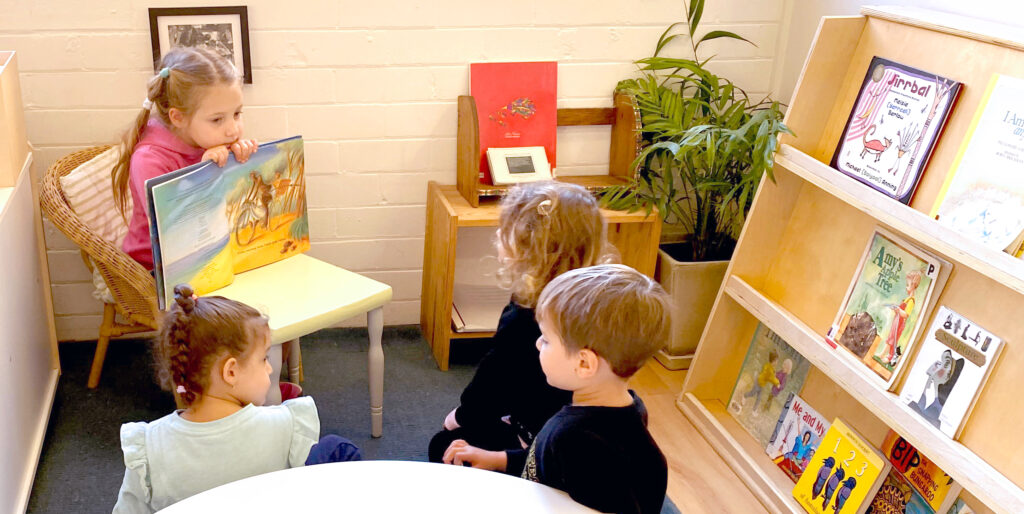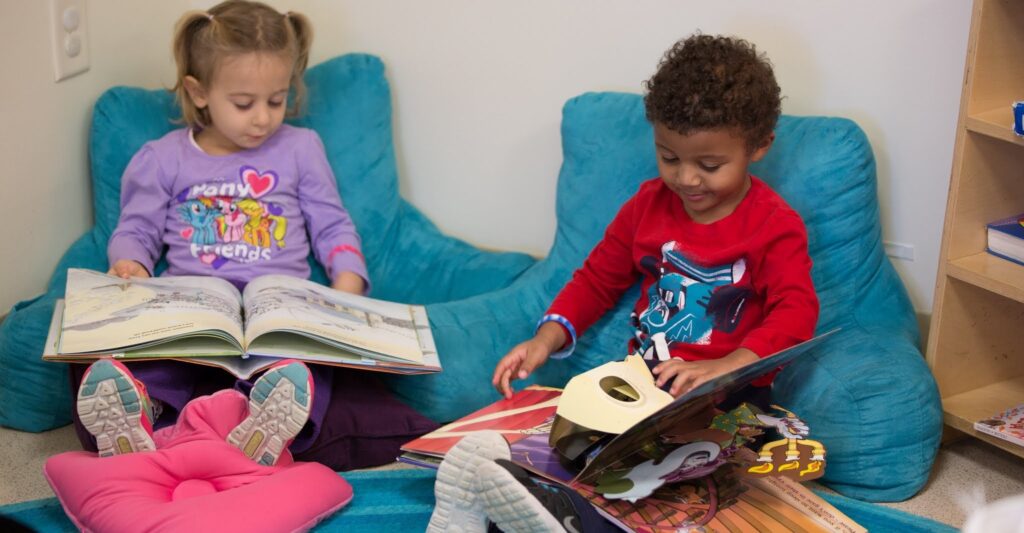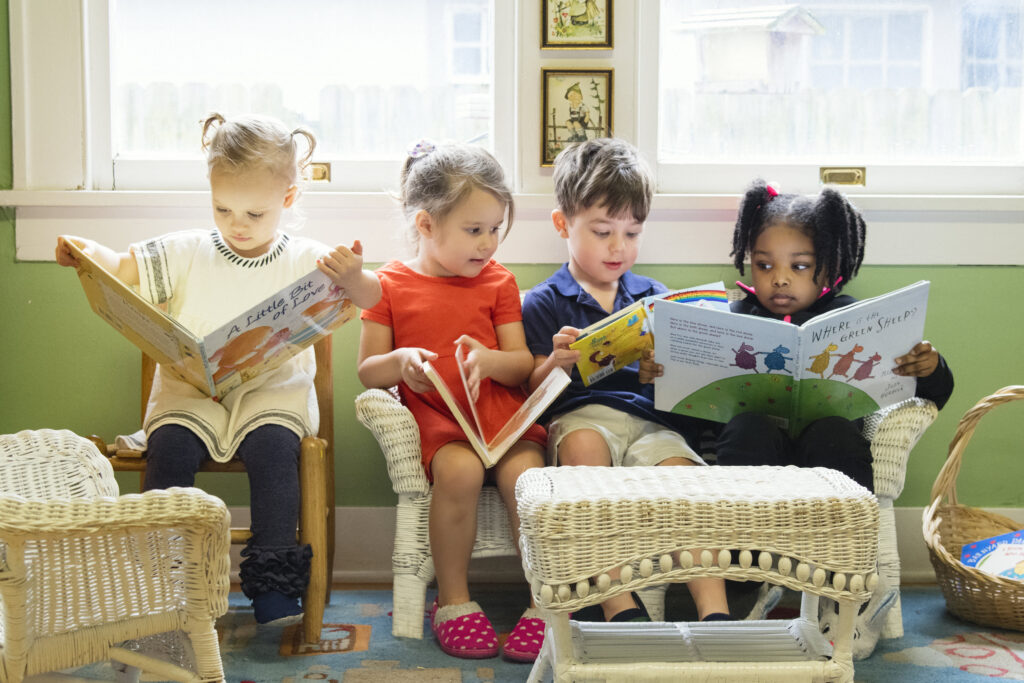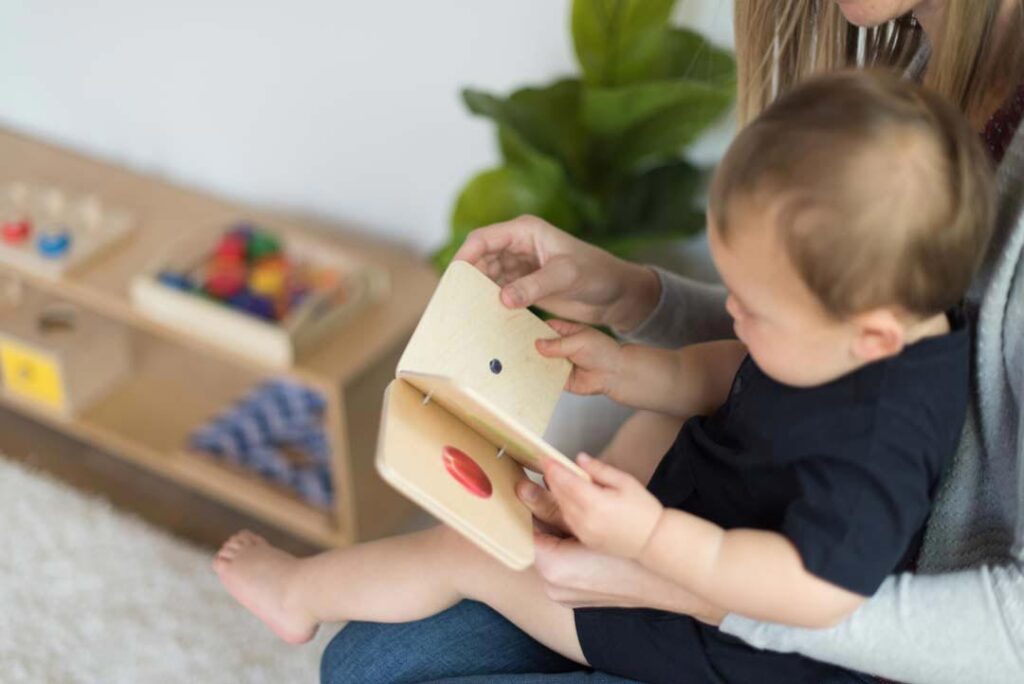The Montessori approach fans the flames of a child’s natural curiosity, ultimately teaching them to guide themselves through learning. Among its many applications is reading.
Montessori specific methods for reading focus heavily on sound and sensory experience before introducing the child to phonics and the alphabet. With a vocabulary knowledge rooted in sound, a child can easily associate written letters with the sounds they already know. This is called encoding or reading.
While this may seem straightforward, the key to having your child reading by 4 years old lies in the work you put in when they’re babies. Below I dive into what makes the Montessori method of teaching so effective for reading comprehension.
Children Start Absorbing Language Right Away
Maria Montessori promotes the idea that children have absorbent minds. It’s why she wrote a book called The Absorbent Mind.
The Daily Montessori writes:
“Montessori observed how children learned the language without anyone teaching them.”
Imagine that, you don’t even have to teach your child English! That’s what Montessori is all about. Instead of focusing on teaching a child to read, the focus is shifted to creating an environment in which the child learns to speak on their own.
This environment creates a fertile mind and plants the seeds for phonics and reading comprehension to thrive.
| Age | Child’s Language Development | Montessori Dos | Montessori Don’ts |
| 0-6 Months | Observing surroundings Hearing family sounds and noises | Allow the child to be part of the family | Leave the child alone in a room while he/she is awake |
| 6-12 Months | Starting to talk back Experimenting with vocalization | Talk to the child as if you were talking to another adult | Use high pitched baby speak |
| 1-2 Years | Learning to communicate Starting to pick up phonics | Use books, singing, rhymes to build vocabulary | Talk at the child, rather, talk to them |
| 2-3 Years | Sentence formation Rapid vocabulary expansion | Use picture books with 1-2 descriptive sentences per page Use phonetic sound cards | Correct them when they misarticulate words |
| 3-6 Years | Pre-reading Pre-writing Learning complete alphabet and phonetics Formal reading/writing instruction begins | Use tangible alphabet letters and toys Allow the child to read/write in groups | Give them books about topics that don’t interest them |

Allow Your Newborn to Be Part of Your Family
Remember, Montessori operates under the assumption that a child’s brain is constantly absorbing info from the moment they take their first breath. She suggests that there is no need for structured lessons for children under 3 years old. Instead, they learn by absorbing all the information in their environment.
So, the call to allow them to be part of the family simply means keeping them in the same room as you while you go about your daily business or chores. Montessori suggests something like a blanket on the floor of whatever room you’re in, suggesting only to leave them in a room by themselves while (IF) they sleep.
This freedom the child has within the four corners of the blanket gives them a sense of independence. In this state, they are comfortable and safe to absorb all the sights and sounds of life in your household.
At the age of 0-6 months, the information observed is raw and uncurated. Your child isn’t learning what sound the letter B makes. Rather, they are just hearing you speak to:
- Them
- Yourself
- Your spouse
- Your other kids
- Your pet
Along with absorbing the sounds of the words you use; your child is also absorbing the tone of your voice.
At this age, there is not much comprehension happening, but there is a lot of raw information being processed and stored away.

Use This Communication to Build Vocabulary
During your child’s second year, the communication skills you’ve been modeling will start them down another round of absorption.
Remember, your kid is always absorbing. They don’t just reach 12 months, learn to communicate, and stop absorbing information so they can move on to the next thing. The difference here is that they have a new tool: communication.
With this new tool, they can start sorting and organizing all of the raw information that they’ve absorbed just from being in your household.
Enter: Vocabulary.
At this age, it’s important to resist talking to your child using baby speak. They absorb your tone, and it can be confusing for a child to turn 2 or 3 and have an adult suddenly start speaking to them differently. I remember being terrified the first time I heard a man outside my family speak to me normally.
They won’t instantly be repeating words you use with them either, but they will be absorbing vocabulary. Remember to let them do this at their own pace. This part is hard, especially when you hear other parents telling you how proud they are of their kid’s reading level.
The key to remember here is that prolonged and persistent effort putting these methods into practice will lead to the eventual language explosion, even if it doesn’t seem fruitful at first.
A newborn absorbs raw information like the sights, sounds, and smells associated with pots and pans in the kitchen. But now equipped with the tool of communication, you can help your one-year-old associate that raw information with a vocabulary word.
Communicating with your child using the methods Montessori suggests will enable their natural ability to absorb and build on the information about their world.

Apply These Methods in Your Home
What I hope you take away from the information here is the notion that Montessori puts the emphasis on the environment, not the curriculum. This is where well-intentioned parents have the ability to really enable their children.
A key part of the Montessori theory is the child’s home environment. Montessori Institutions have professionals to put together top-notch learning environments. However, your child only spends less than a third of their time there. At a young age, they spend a lot of time at home with you.
While professional Montessori institutions have excellent success rates, and scary TED Talks about public education are floating around, you know what’s best for your child at the end of the day. Whether you’re a Montessori certified instructor or not.
Without reducing the magnificent work of Maria Montessori, all she really did is take excellent parenting practices and bundle them into an educational curriculum.
You already have everything you need within to give your child a Montessori environment right in your home!
No One Is Too Old for Montessori
If you didn’t know about the Montessori method until your child was older than 4, don’t worry. Your child is where they are in their process, no need to make that bad or wrong. Montessori is all about meeting them there. So the advice here would be to just start.
The timing and reading specific methods in this article may not directly align with your child’s age, but to true subscribers to the Montessori philosophy that won’t matter.
Sure, your child’s curriculum may look a little different, but you can still make changes to your environment at home that will benefit them. Just remember to meet them where they are, and then let them take the lead.

